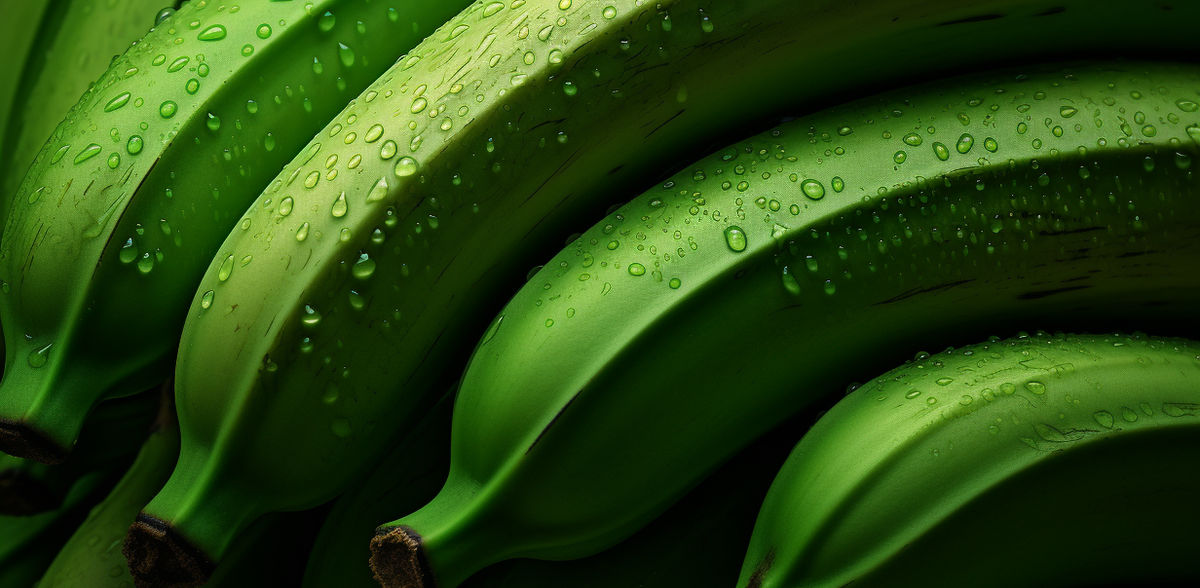New approach in the treatment of non-alcoholic fatty liver disease
Resistant starch, such as that found in green bananas, may play an important role in treatment of non-alcoholic fatty liver disease in the future
Advertisement
The prebiotic resistant starch could play an important role in the treatment of non-alcoholic fatty liver disease (NAFLD) in the future. Initial indications suggest that a specially adapted diet with resistant starch not only positively influences the intestinal microbiome but also leads to an alleviation of the disease. This is what an international research team from the “Balance of the Microverse” Cluster of Excellence at the University of Jena, Shanghai Sixth People's Hospital Affiliated to Shanghai Jiao Tong University School of Medicine (SSPH-SJTUSM) and the Leibniz Institute for Natural Product Research and Infection Biology (Leibniz-HKI) found in a recent study.
Previous studies suggest that fatty liver disease that is not caused by excessive alcohol consumption is closely related to the gut microbiome, and microbiota-directed foods could be an effective non-pharmacological intervention to deal with NAFLD. Against this background, the researchers conducted a clinical nutritional study with patients affected by the disease. The results have now been published in the current issue of the research journal Cell Metabolism.
"We found out that the participants in the study benefited from a resistant starch diet, as the accumulation of fat in the diseased liver was reduced. Furthermore, we observed an increase in certain types of bacteria in the gut of the participants; these bacteria positively influenced fat reduction and transport in the liver. In addition, reduced NAFLD and inflammation biomarkers indicate an alleviation of liver damage," summarized study leader Gianni Panagiotou, Professor for Microbiome Dynamics at the Cluster of Excellence "Balance of the Microverse" at the University of Jena, Germany.
Resistant starch has a prebiotic effect in the gut
Resistant starch belongs to the dietary fibres and is found, for example, in bread, pasta, and legumes. It consists of indigestible fibres, and thus, has a prebiotic effect in the gut. “We found that the number of beneficial bacteria increases when resistant starch is metabolized by microorganisms in the colon. At the same time, the number of harmful bacteria decreases", explains first author Yueqiong Ni. "This leads to a more balanced gut microbiome and has a positive impact on health."
The team led by Gianni Panagiotou, Weiping Jia, Yueqiong Ni, and Huating Li examined serum and fecal samples from 200 participants over a period of four months. They found that the level of “Bacteroides stercoris”, in particular, increases significantly the more severe the disease is. “In our study, we found Bacteroides stercoris occurred in less amount in test persons after eating 40 grams of resistant starch per day”, says co-corresponding author Huating Li. The researchers conclude that it is advisable to consume a fist-sized amount of "healthy" carbohydrates naturally containing resistant starch, such as wholegrain cereals, legumes, green bananas, and starchy vegetables like potatoes at every meal to alleviate fatty liver.
Currently, about 30 percent of the world's population suffers from non-alcoholic fatty liver disease. Thus, the disease is classified as an epidemic by the World Health Organisation (WHO). The metabolic disorder can also aggravate diseases such as type 2 diabetes or cardiovascular diseases. However, for affected patients, no drug therapy has yet been approved. In order to make concrete nutritional recommendations, further and longer-term studies are necessary, according to the “American Association for the Study of Liver Diseases”.
Original publication
Yueqiong Ni, Lingling Qian, Sara Leal Siliceo, Xiaoxue Long, Emmanouil Nychas, Yan Liu, Marsena Jasiel Ismaiah, Howell Leung, Lei Zhang, Qiongmei Gao, Qian Wu, Ying Zhang, Xi Jia, Shuangbo Liu, Rui Yuan, Lina Zhou, Xiaolin Wang, Qi Li, Yueliang Zhao, Hani El-Nezami, Aimin Xu, Guowang Xu, Huating Li, Gianni Panagiotou, Weiping Jia; "Resistant starch decreases intrahepatic triglycerides in patients with NAFLD via gut microbiome alterations"; Cell Metabolism, Volume 35





















































